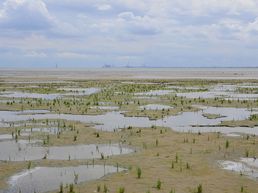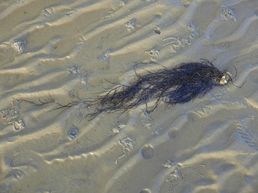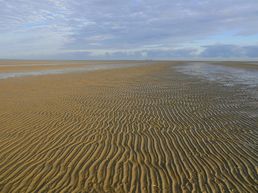Contact

Dörte Poszig
Education Coordinator
NIOZ Royal Netherlands Institute for Sea Research
+31 (0)222 369 469 / www.nioz.nl/en/education
Mon, Tue, Thu, Fri 9-14 h



Spiekeroog, Summer School 2018 (ICBM)

Research background and motivation
Sandy beach ecosystems constitute an important transition zone between continental and marine zones. They dominate most temperate and tropical coastlines, where they provide a wide range of key ecosystem services (such as reduction of storm impacts, nutrient cycling, water purification, nursery and feeding-breeding habitats). However, beach ecosystems are vulnerable and may be affected, for example, by erosion caused by climate-induced sea level rise or increased nitrogen availability due to human activities. Although studies on beach ecosystems have significantly increased over the last decades, biodiversity studies of their benthic macrofauna have received attention only quite recently and there is still a need for further information on biogeochemical processes and dynamics as well as the interactions between abiotic and biotic factors within these systems.
The beach system studied herein is located at the northern side of the back-barrier island of Spiekeroog (German North Sea). The nearshore and offshore zone of Spiekeroog is exposed to the hydrodynamics of the open sea and strongly affected by tides, winds and wave driven processes. The aim of the study is a) to assess spatial variations in biogeochemical key parameters in a high-energy beach system along a transect from the rise of the dunes to the low-water line and reaching the shoreface and b) to compare spatial variation of macrofauna communities in the near- and offshore zone of the beach system (seaward extension of the above transect) in relation to environmental parameters such as hydrodynamics and sediment type.
Planned activities with students
- Pore-water sampling along a cross-shore transect from the dunes to the low-water line reaching sediment depths down to 2 m below sediment surface. Pore-water sample are analysed in the field for temperature, salinity, oxygen, FDOM and selected nutrients;
- Water and surface sediment sampling along a cross-shore transect from the low-water line to the nearshore zone. Oceanographic parameters are measured with CTD profiles and Niskin water samplers. Benthic sampling is performed through Van-Veen grabs. Sediment and macrofauna analysis is performed at the environmental centre Wittbülten, Spiekeroog;
- Visit & scientific background of the time series station Spiekeroog (by boat) and the general hydrodynamics in the inlet between Spiekeroog and Langeoog;
- Visit & scientific background of the biodiversity experimental islands (by foot during low water) in the back-barrier zone of Spiekeroog (south of Wittbülten).
Selected references
- Beck M, Reckhardt A, Amelsberg J, Bartholomä A, Brumsack H-J, Cypionka H, Dittmar T, Engelen B, Greskowiakc J, Hillebrand H, Holtappels M, Neuholz R, Köster J, Kuypers M, Massmann G, Meier D, Niggemann J, Paffratha R, Pahnke K, Rovoa S, Striebel M, Vandieken V, Wehrmann A, Zielinski O (2017) The drivers of biogeochemistry in beach ecosystems: A cross-shore transect from the dunes to the low water-line. Mar Chem 190, 2017, 35-50, doi: 10.1016/j.marchem.2017.01.001.
- Becker LR, Badewien T, Bartholomä A, Schulz AC, Zielinski O, Kröncke I (2017) South-eastern North Sea sandy beach macrofauna communities and their physical environment, Helgoland Marine Research, in review

![[Translate to English:]](/f/5/_processed_/3/2/csm_ICBM-Logo-transparent-_91fe1c6774.png)